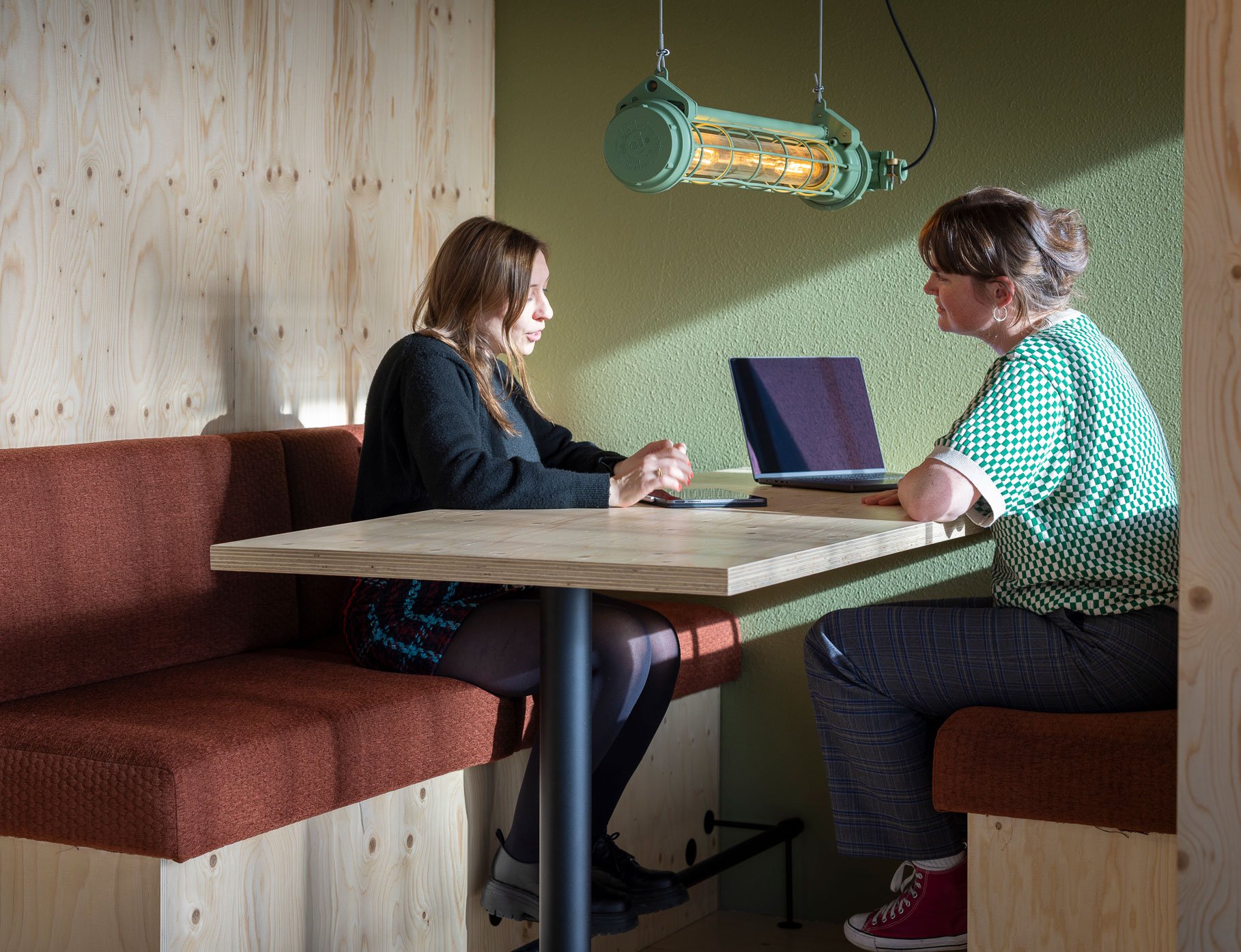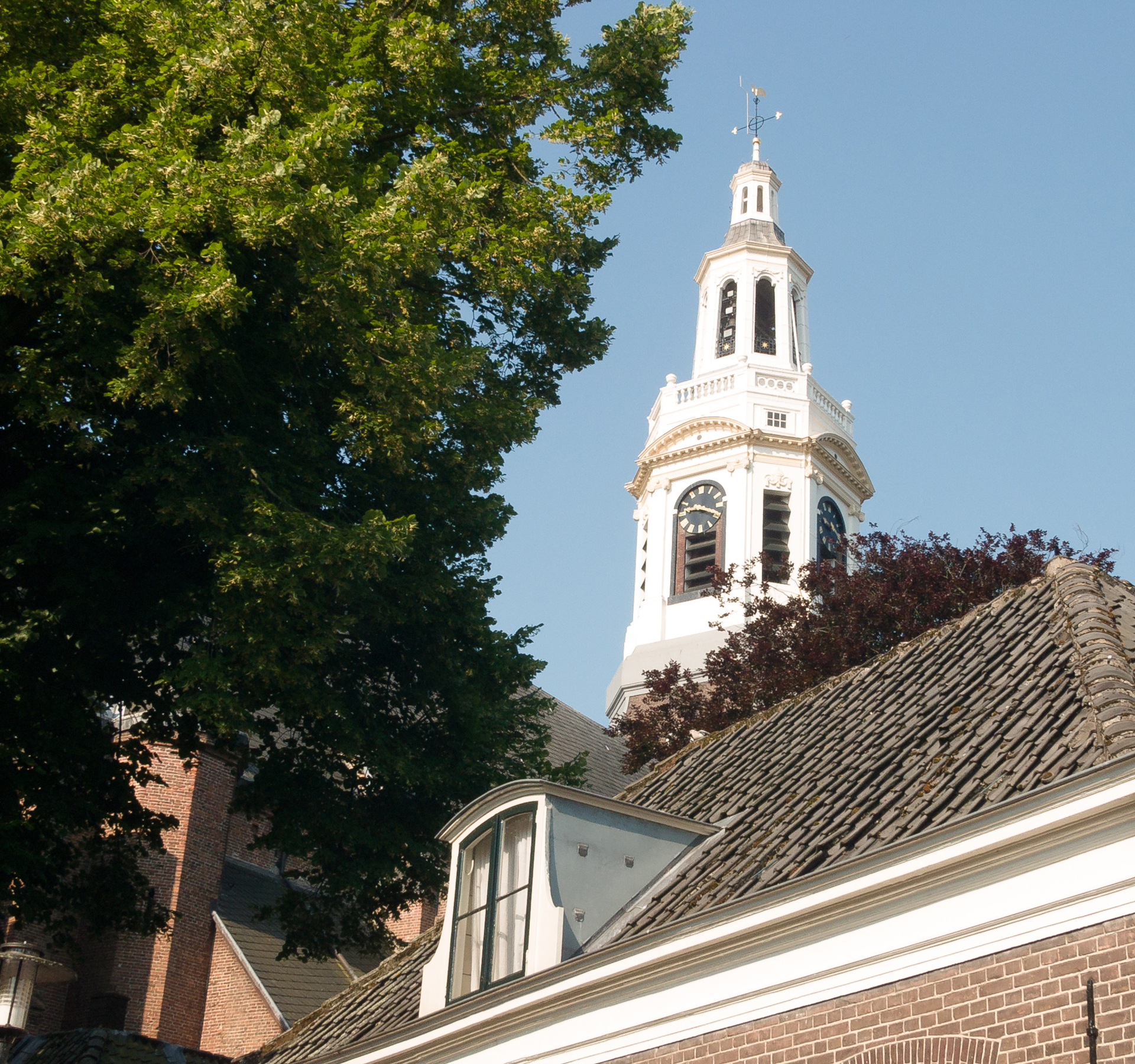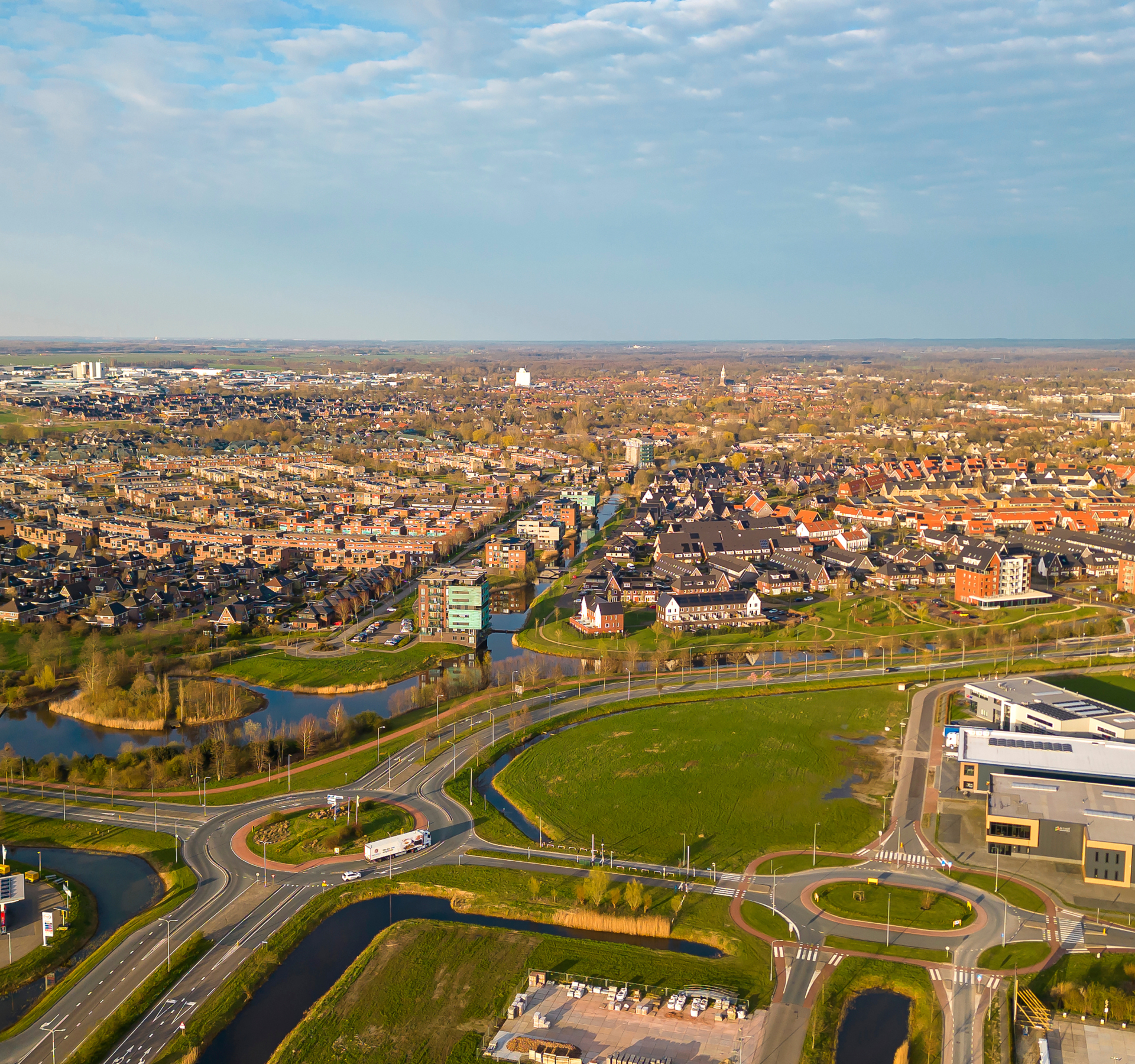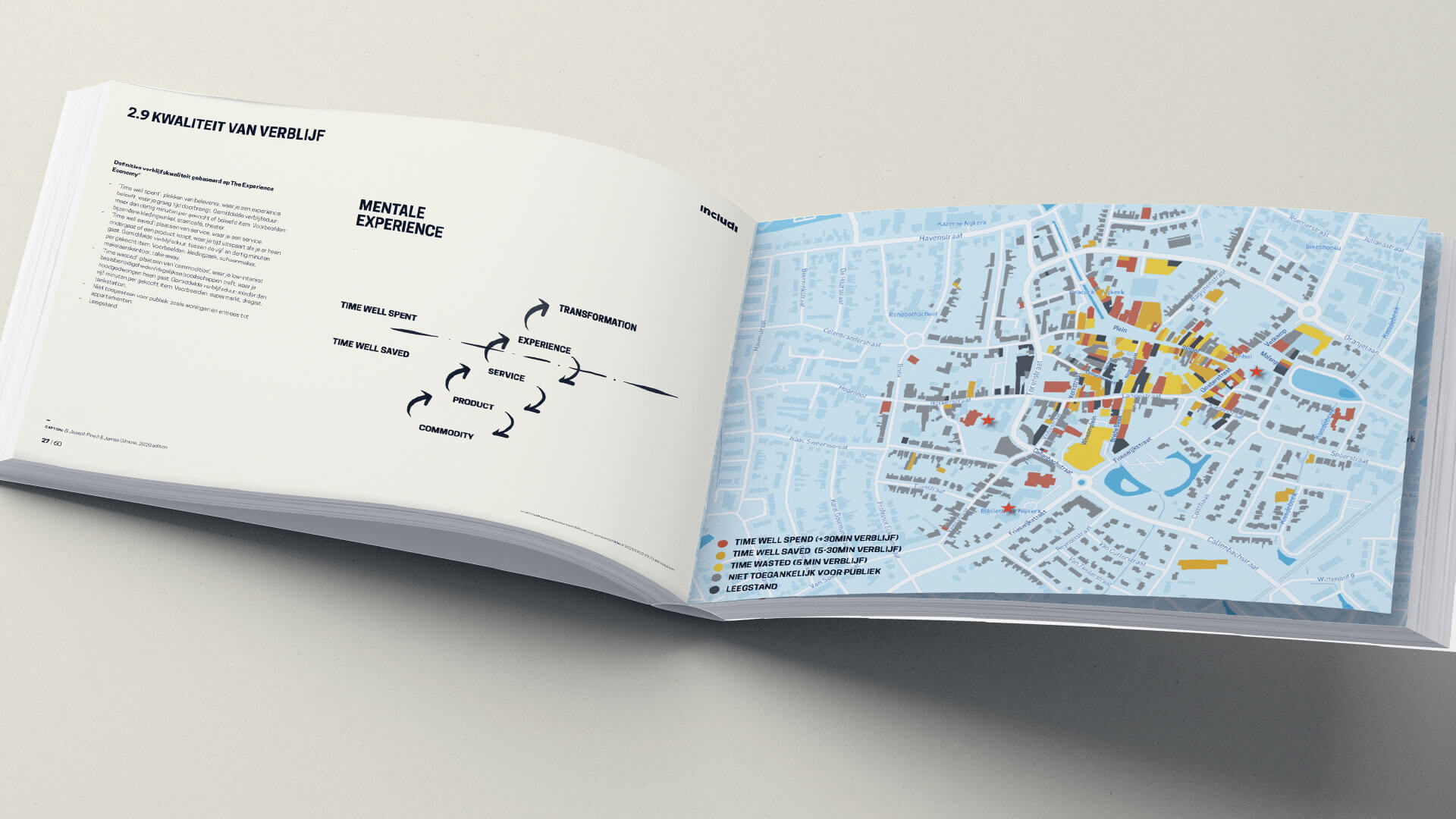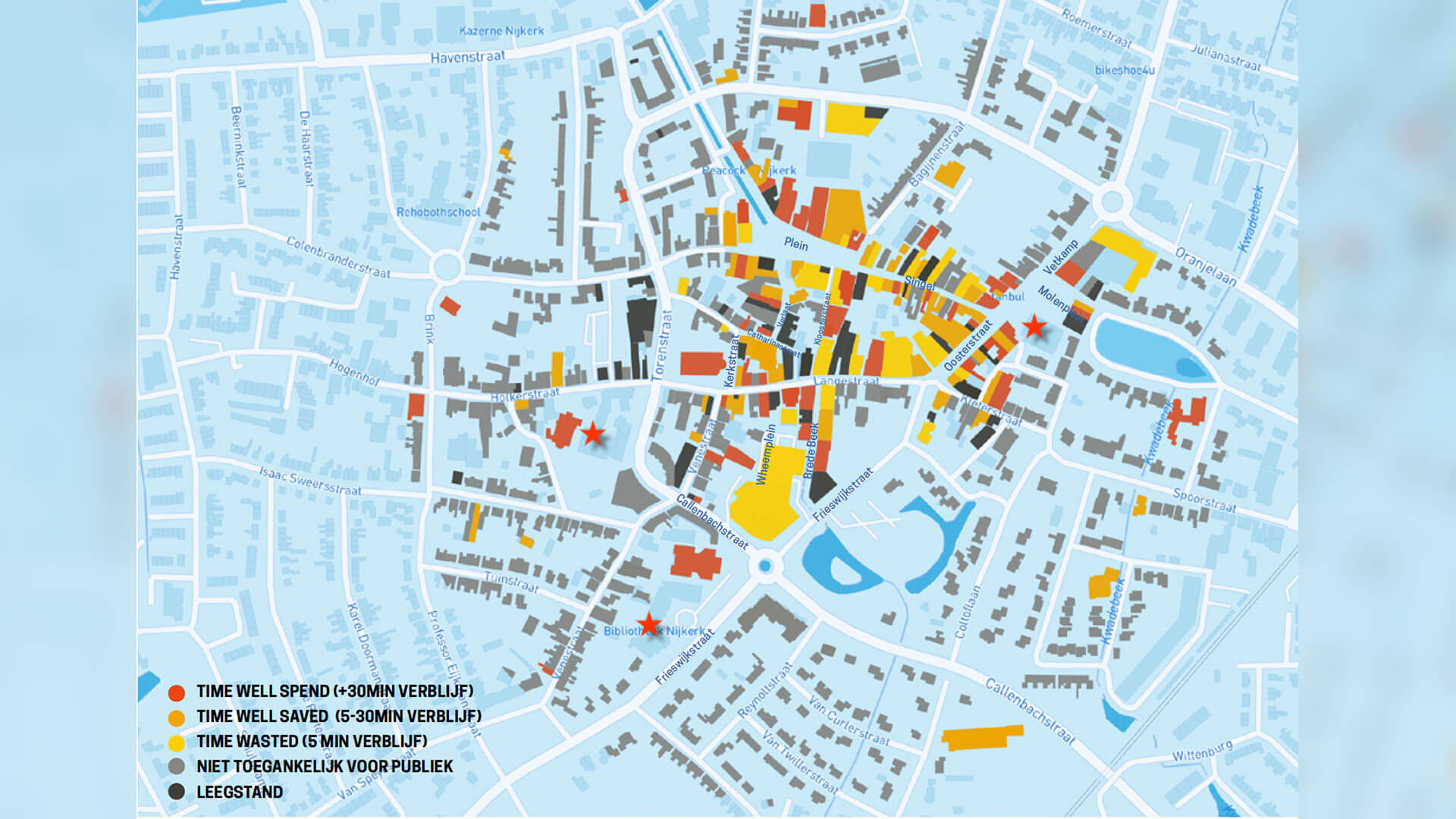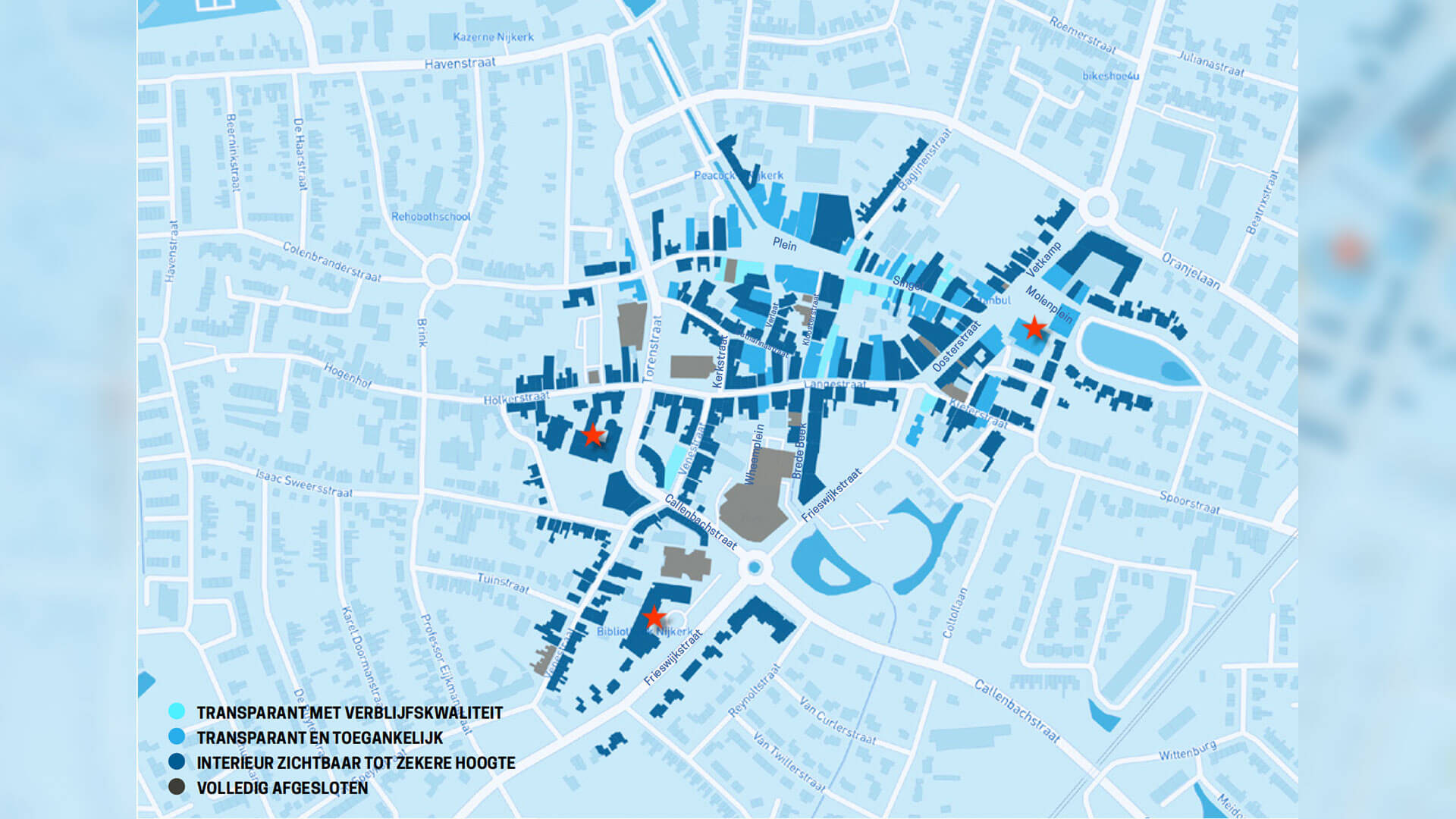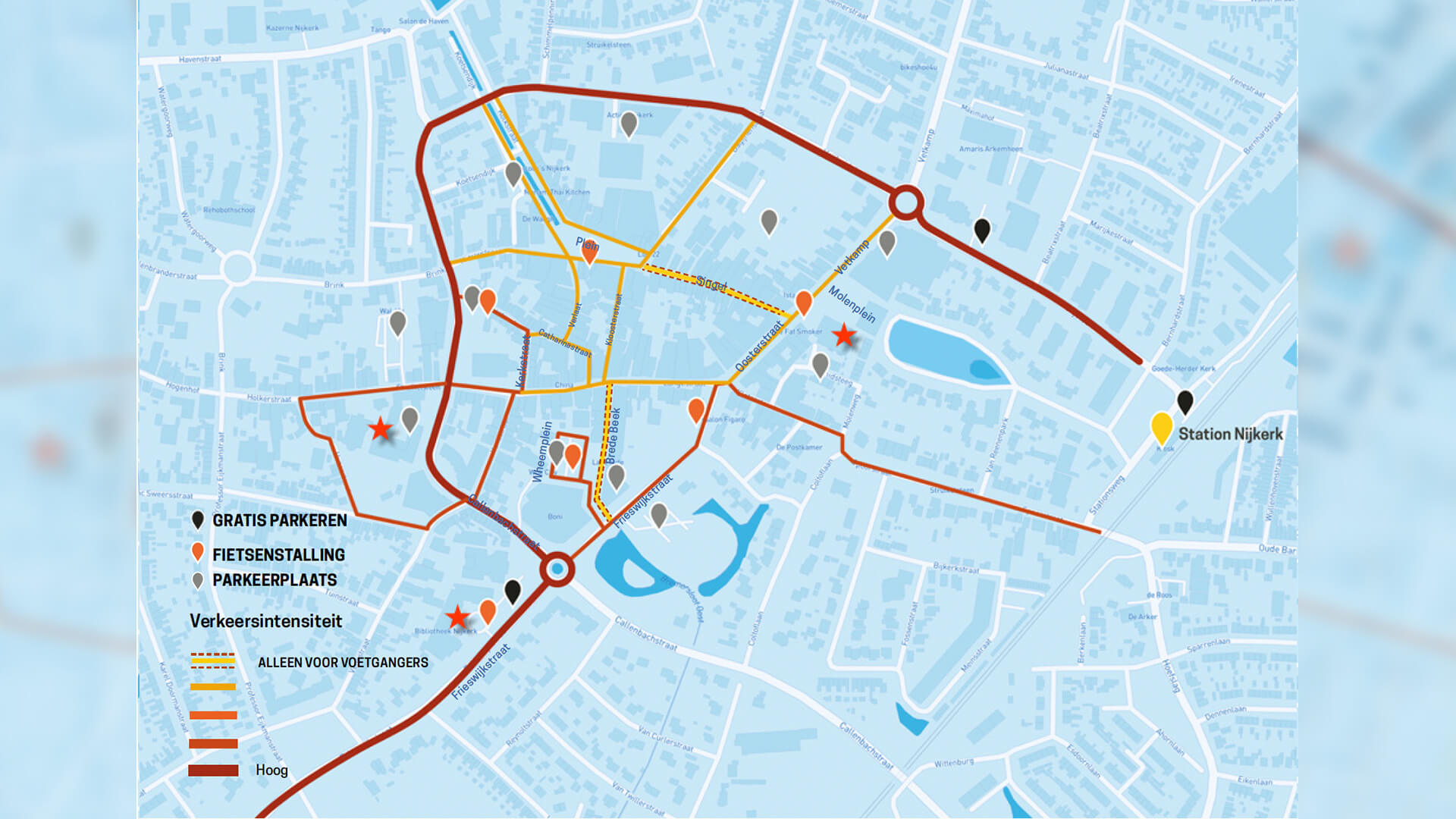In search of an optimal location
The Dutch city of Nijkerk was reevaluating the current location of its library. The objective is to ensure its suitability for the next phase as a social hotspot, providing users with a quality “time well spent”. To contribute evidence-based arguments for the ongoing political discourse, we were asked to examine three local sites, considering contextual aspects and plot volume, because the city uses this to differentiate between stand-alone and mixed-use facilities. Our study aimed to shape opinions and drive the political dialogue in Nijkerk, guiding the search for the optimal locations for the future library.
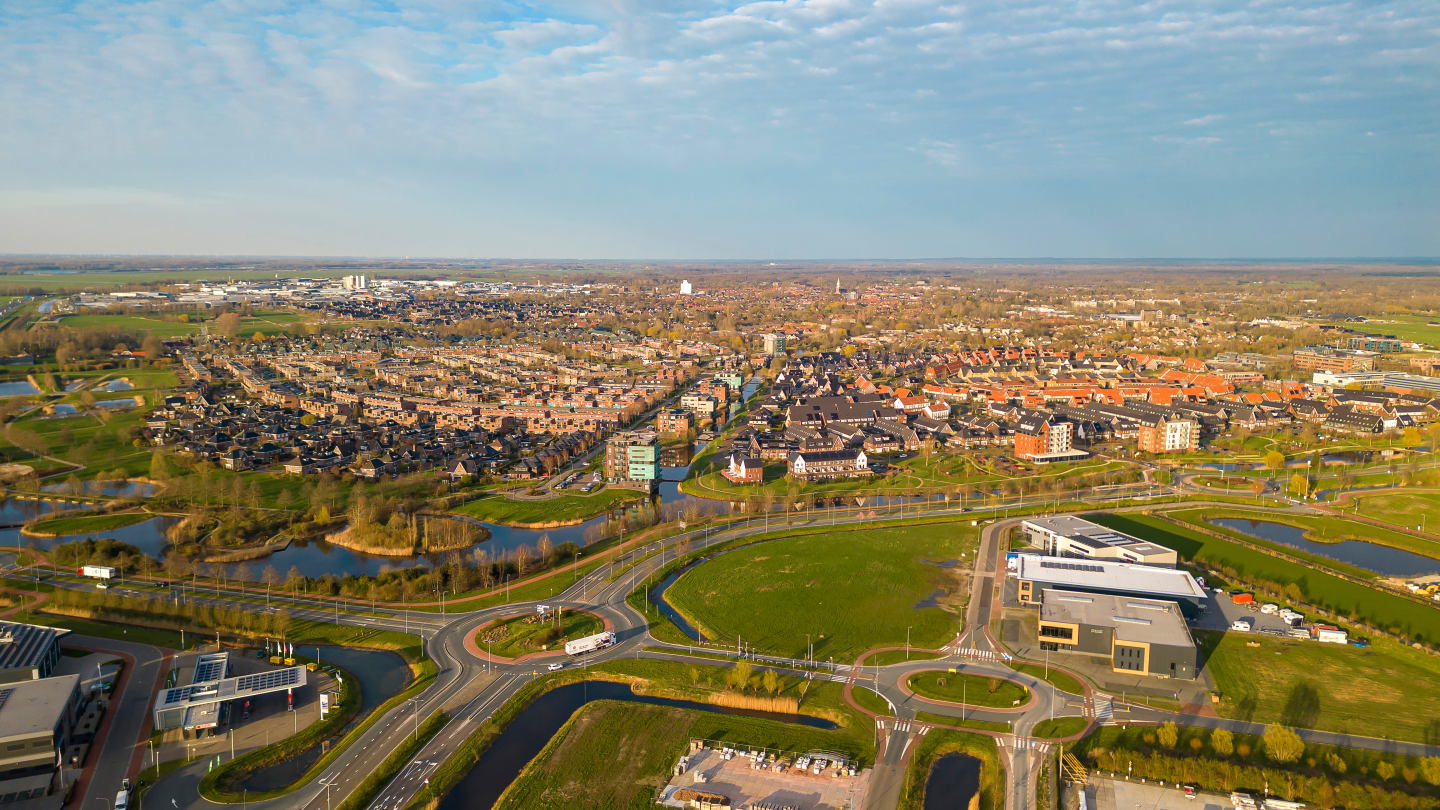
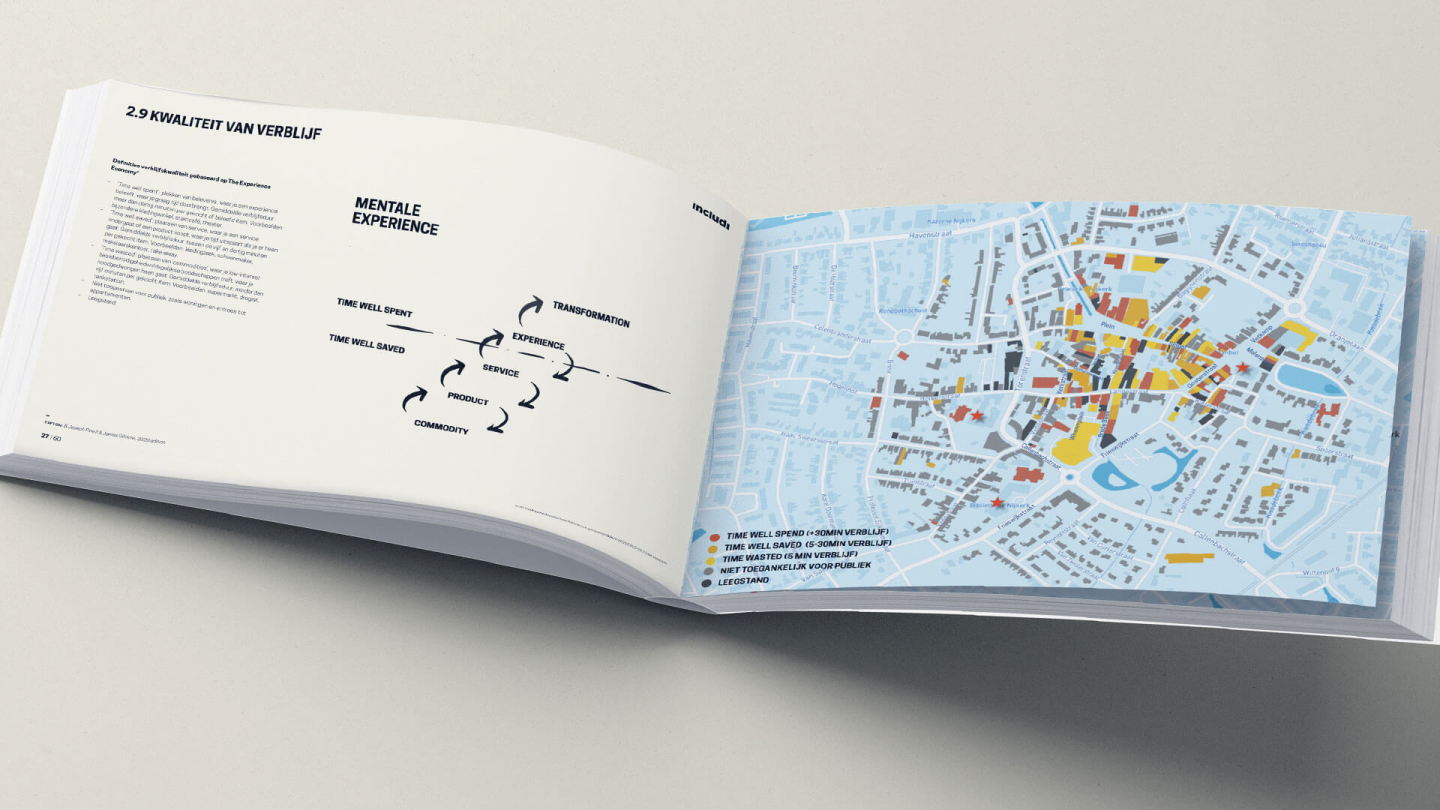
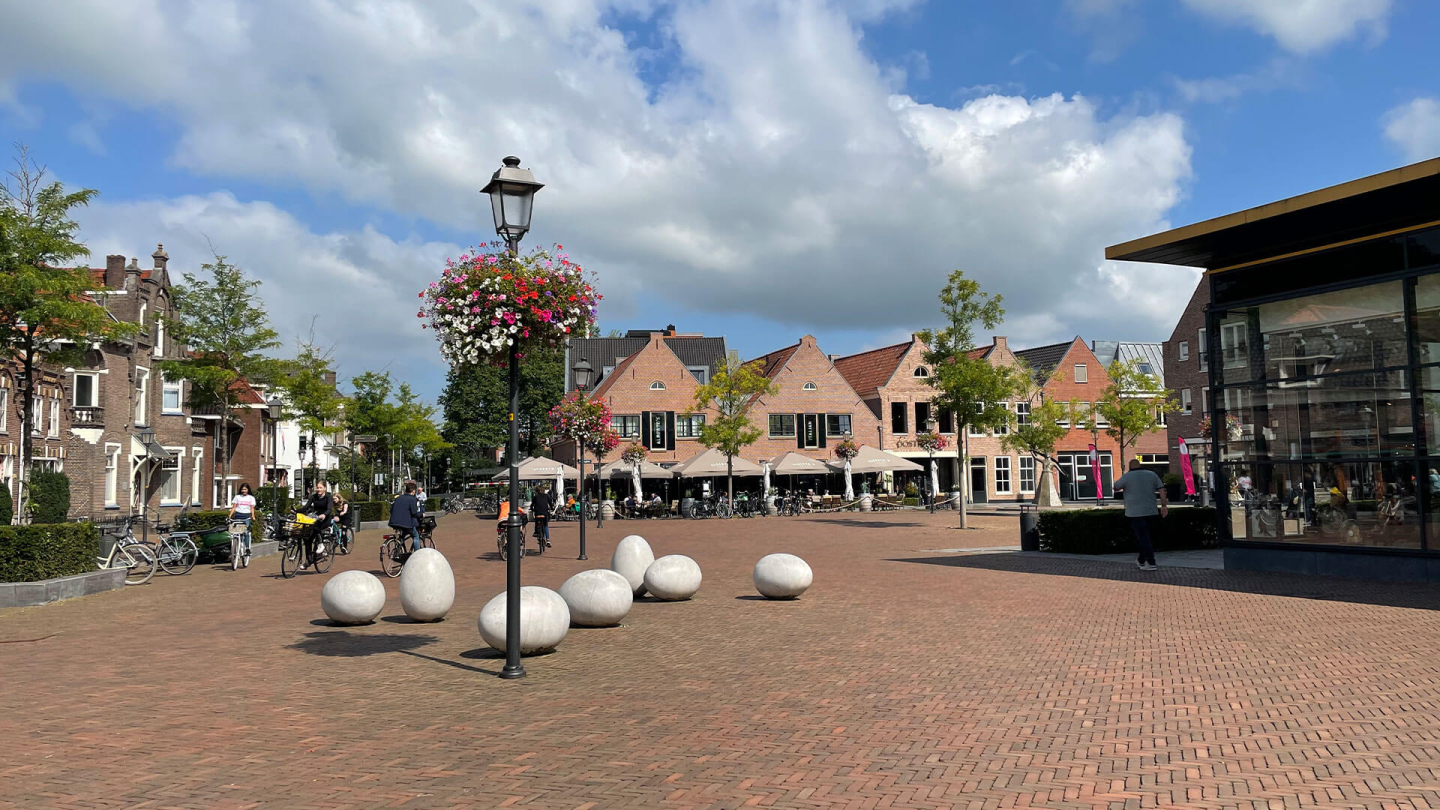
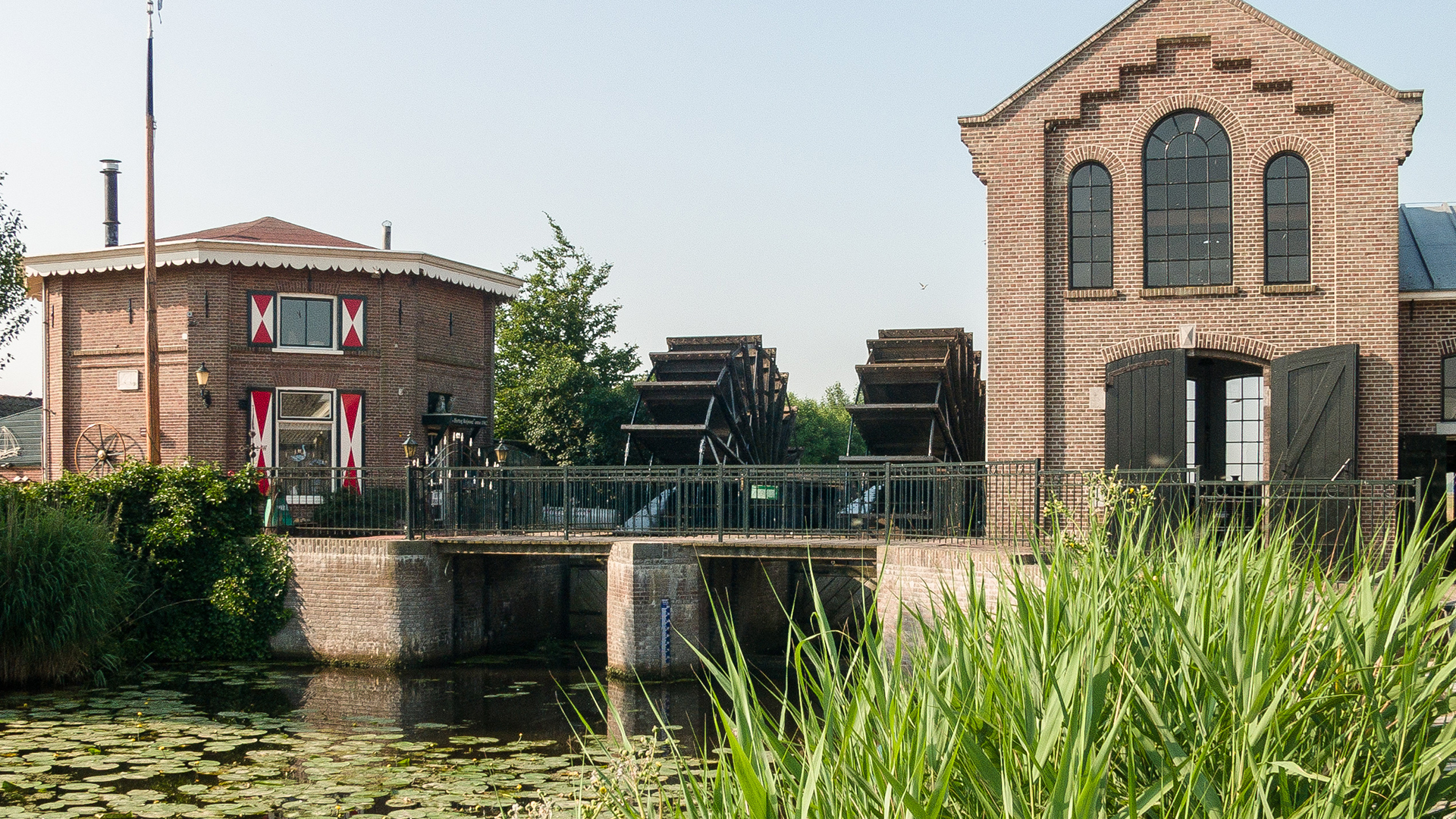
Heartland Hub
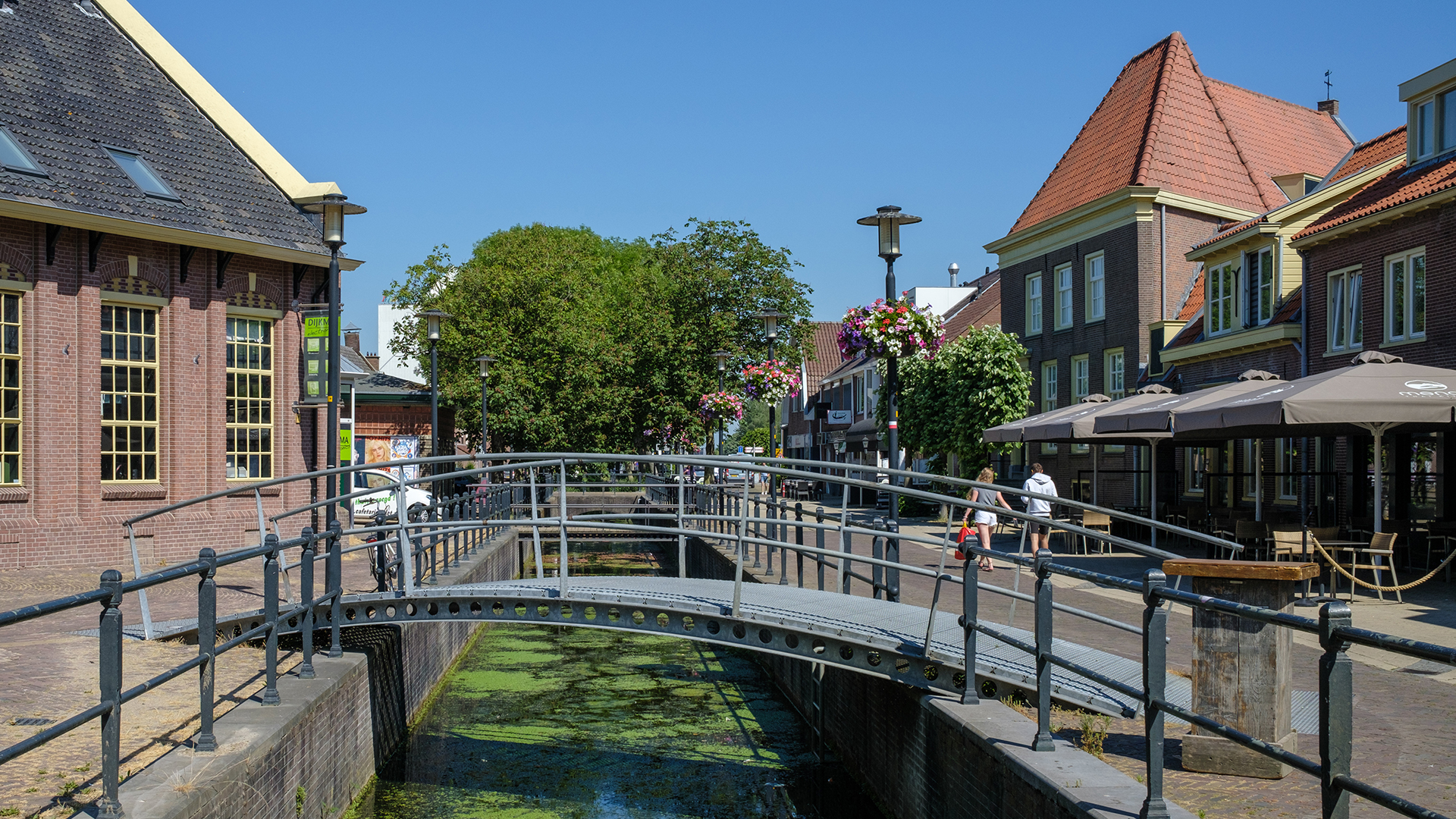
Residence Evaluation
The lenses that give us perspective
By starting a comprehensive feasibility study, we focused on investigating, rating and evaluating all three different sites on relevant physical characteristics to decide about the suitability of the potential location. At includi, we have developed a set of lenses to identify the best third place, taking a closer look at the three different potential sites. These lenses serve as tools to examine inclusivity from various angles, shaped by theories of our heroes such as William H. Whyte (urbanist, sociologist, organizational analyst, journalist and people-watcher),
Paco Underhill (environmental psychologist), Kevin Lynch (urban planner), Ray Oldenburg (sociologist), B. Joe Pine II (author who coined the term ‘experience economy’) and others. They offer a fresh view of the physical aspects of successful third places. Categorized by Abraham Maslow’s hierarchy of needs, we identify and prioritize the psychological importance of the physical aspects of social places.
Ready? Set? Debate!
Based on the insights gained, we analyzed, rated and evaluated the sites and contexts considering demographic, social, geographic, economic, traffic, and public transport issues. Urban factors, such as the construction year, age of neighborhoods, destination plans and housing ratios, were also taken into account. In addition, we mapped the existing library setup into practical building blocks, projecting them onto the options to assess dimensions and functionality.
Last but not least, we considered the Dutch Library Law in terms of physical aspects conducive to a healthy library operation. Yes, we covered all the bases and then some! Despite this myriad of perspectives, things were simplified thanks to our transparent rating system. It summarized all findings in a couple of numbers for each plot – ready for discussions to take off.
A colorful kaleidoscope of perspectives was sure to liven up the city council’s political debate.
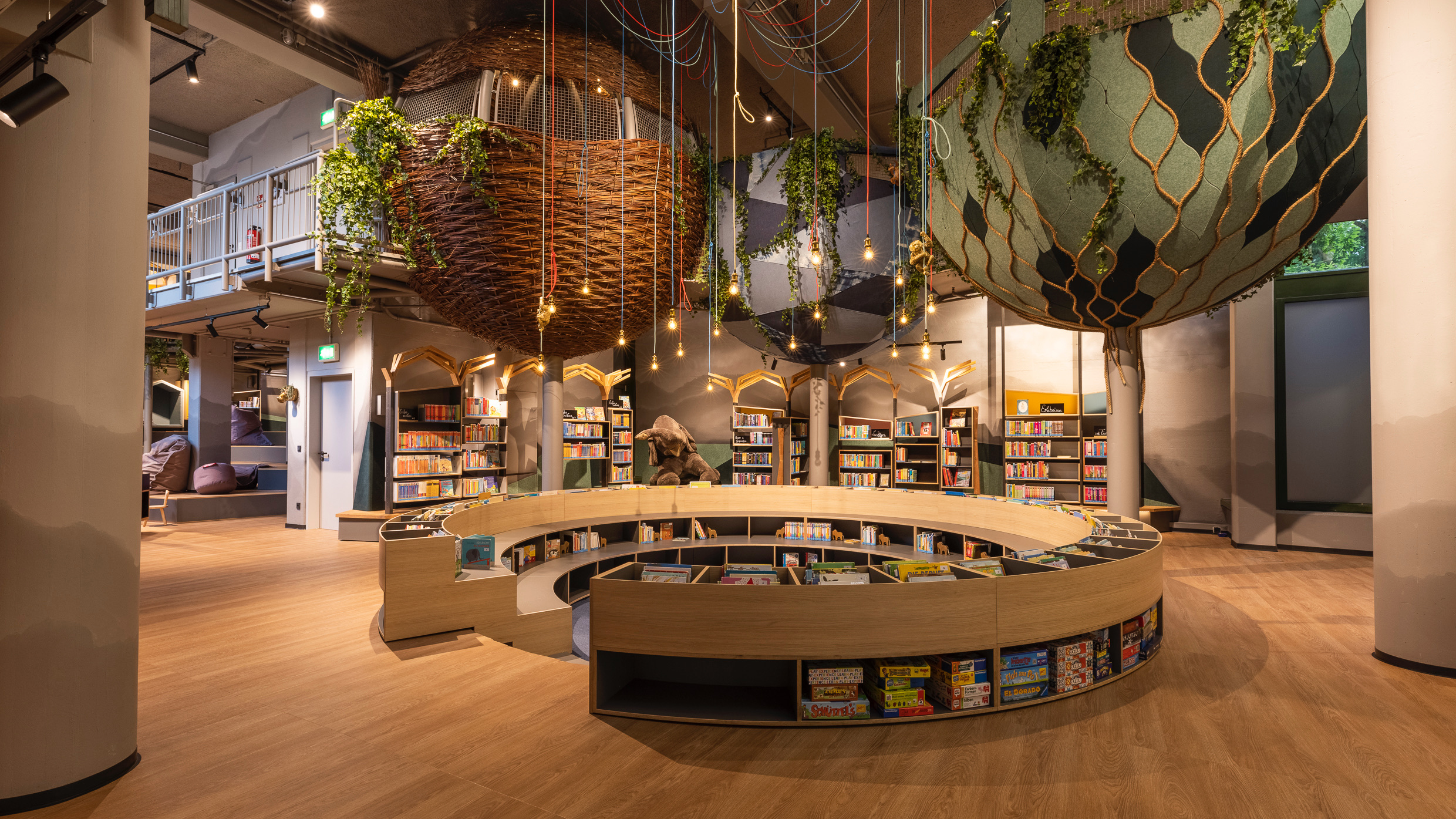
Discover our inclusive places
